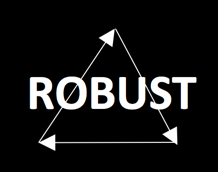ACTION NAVIGATION
Strategic Action Systems involve multiple players working together to accomplish a goal that each player alone cannot accomplish. Implementing strategy inevitably requires reducing gridlock between interdependent elements. If a program stalls, some of its elements that are not working will cause others to fail also.
Reducing this kind of gridlock requires a ‘guidance system’ that can immediately detect the nature of the blockage and take corrective action. What is needed is a ‘navigational logic’ to guide effective strategy execution. This logic needs to be based upon all the interdependent relationships within the ecosystem being transformed.
The ConceptBase. To capture and leverage this logic, ROBUST created the ConceptBase. It is a semantic mapping of all elements and their interrelationships. It provides an underlying model of the system as a network of interactions between players and enabling conditions.
The logic of this semantic web is the ‘DNA’ of strategy execution. It is ‘injected’ into the ROBUST operating system where it animates the functionality of all application features of SyncUp—enrollment, activities, digital assistants, measures, analytics, updates/news, and smart suggestions. It operates effectively even when there is a high degree of uncertainty, variability and evolving circumstances.
Transforming common application features. The SyncUp operating system uses this semantic map as a navigation system to drive the connectivity between people: their chats, messaging, interactions with digital assistants, and feedback loops between users.
Applying this navigational logic to common application features such chat, messaging and chatbots transforms them to an entirely new level of utility and power.

